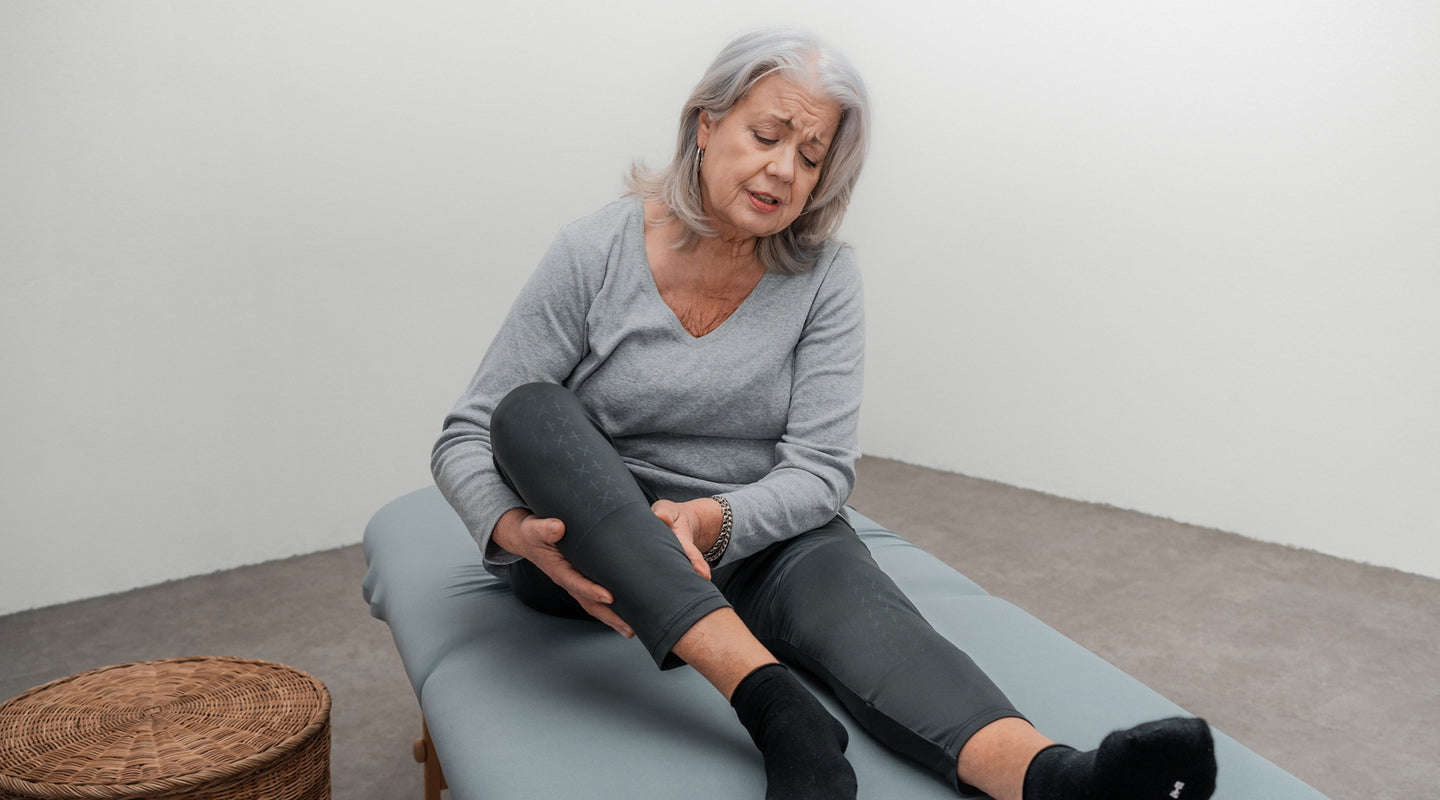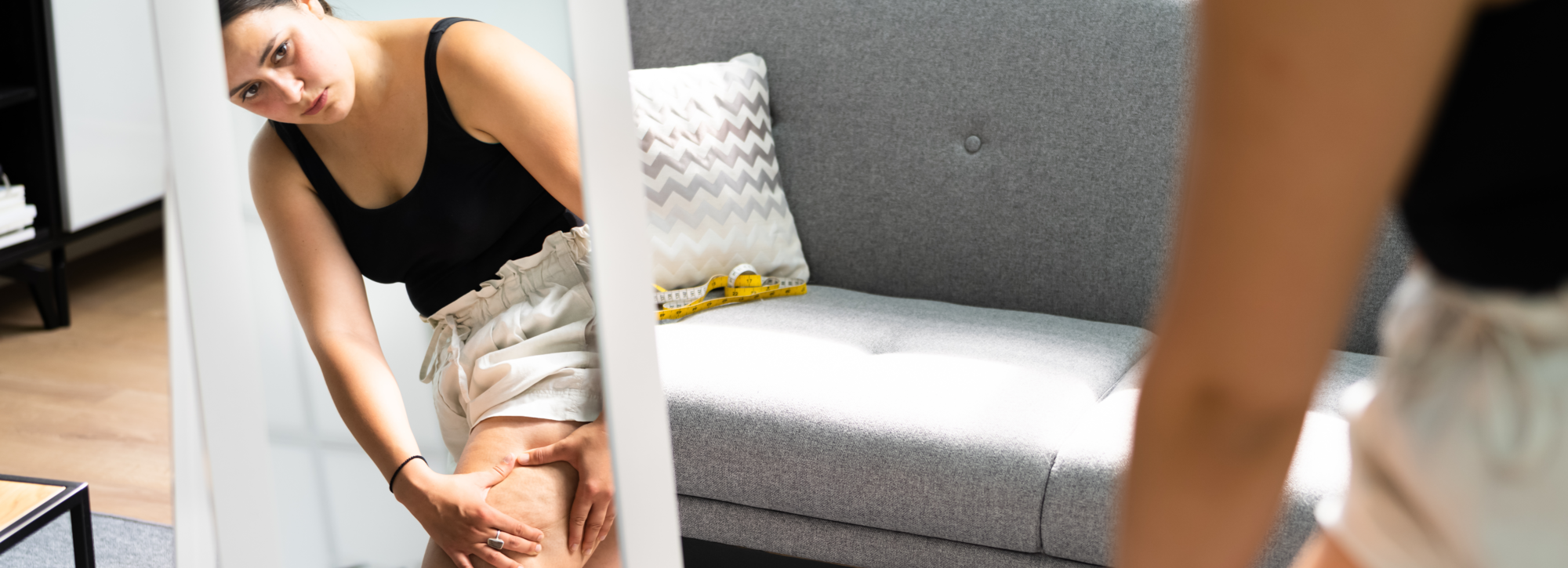This blog is about lipedema. It is a truly painful and debilitating disease that can have serious consequences for those affected. 10-18 percent of women aged 25-65 years are affected. Despite its prevalence, this condition is often overlooked and misunderstood by the medical community and even the general public.
People with lipedema experience swelling of fat cells, especially on the legs or arms, but these symptoms are often mistaken for obesity or simply dismissed as an aesthetic problem. In addition, most don't realize how difficult living with lipedema can be emotionally, from feeling invisible because doctors don't recognize it, to discrimination from strangers when patients try to do everyday things, such as Shopping at clothing stores designed for those who meet society's body mass index (BMI) standards.
In this blog post, we'll discuss what lipedema is and why more attention to treatment options is needed so that sufferers can finally get the answers - and help - they need!
What are the causes of lipedema?
The exact cause of lipedema is not known, but there are some factors that may increase the risk of developing lipedema:
Hormonal imbalance: This can be caused by fluctuations in hormones such as estrogen, progesterone, and testosterone.
Genetic predisposition: Certain genes may be associated with an increased risk of developing lipedema.
Age: Lipedema is more common in middle-aged women than in men and children, probably because their hormones change during this time.
Obesity: Being overweight or having a higher-than-average body mass index (BMI) may increase the risk of developing lipedema.
Low-exercise lifestyle: Insufficient physical activity may contribute to the development of lipedema.
Stress: Persistent high levels of stress may lead to an increased risk of lipedema.
Diet: A diet high in fat, sugar, and calories may increase the risk of developing lipedema.
History of trauma: Previous injuries or trauma to the legs and hips may contribute to the development of lipedema.
Occupations: Certain occupations that involve standing for long periods of time, such as in the hospitality industry, may increase the risk of developing lipedema.
Medical conditions: Certain medical conditions, such as diabetes, hypothyroidism, kidney disease, and lymphedema, may increase the risk of developing lipedema.
Medications: Certain medications, such as those used to treat cancer, may cause lipedema.

What are the symptoms of lipedema?
- Pain in the affected areas (legs, arms, buttocks), when pressure is applied
- Sensitivity to touch (the affected area feels painful to the touch)
- Swelling of the legs/arms (also known as "stovepipe" or "pillar legs")
- Abnormal fat distribution and enlargement of the feet and ankles
- Feeling "heavy" in the legs or arms
- Dimpling of the affected area of skin, similar to an orange peel
- Visible and palpable fat accumulation without corresponding weight gain
- Inability to reduce excess fat through exercise or dieting
- Limited range of motion in the affected area
- Skin irritation/dryness in the affected area
The above symptoms are common in women between the ages of 25 and 65 and can be easily diagnosed by a medical professional such as a lymphologist or vein specialist. It is important to see a doctor as soon as possible so that the condition can be treated appropriately. This way, further complications or negative physical effects of lipedema can be avoided.
What causes lipedema?
Whether the enlargement of fat cells (hypertrophy) or an Multiplication of the fat cells (hyperplasia) for this clinical picture is responsible, is still unclear. Also a combination of both Mechanisms is possible. Since almost exclusively women are affected are affected, genetic predisposition and the effect of of female hormones are also being discussed as causes.
The constant stress on the lymphatic vessels leads to degenerative
Changes in the lymphatic vessels, whereby the transport capacity is
is reduced. As a result, fluid remains in the tissues and leads to
Edema.
If this condition persists over a prolonged period of time, it results in encroachment at the
inflammation and collagen deposition in the affected areas
Collagen deposits. This collagen leads to an irreversible
Fibrosis of the fatty tissue and the overlying skin.
Recognize lipedema: What are the symptoms?
In the early stages, it can be difficult to distinguish lipedema from Adipositas to distinguish. As the disease progresses, one can one can distinguish between the two on the basis of the disproportionate distribution of fat tissue distinguish between the two. While the extremities swell, the hands and trunk remain slim.
Patients with this condition report a feeling of tightness and pain in the affected area of the body. In contrast to conventional edema, elevating the legs brings only minimal improvement

The lipedema pain, especially in the late stages, can be so severe that the patients, due to their restricted mobility, they are also significantly restricted in their daily lives. Among the symptoms of lipedema also include an increased tendency to develop Hematomas. Even slight pressure causes bruising, although no blood clotting disorder is present.
The stages of lipedema:
Lipedema can be divided into three stages based on its anatomical Appearance and the pressure findings into three stages be classified. The severity of the symptoms or the volume of the edema does not play a role.
Stage I: smooth skin surface, thickened subcutaneous fat tissue, fine nodular fat structure.
Stage II: uneven skin surface, rough, nodular fat structure.
Stage III: rougher and harder skin surface and subcutaneous tissues, large-lobed deformed fat lobes.
The right diet for lipedema
Patients can reduce their discomfort and pain by up to 80 percent. This showed a study by the Center for Vascular Medicine in Hamburg with obese lipedema and lymphedema patients. In addition, less Therapy required.

Healthy indulgence: tips for a healthy and balanced diet
A healthy and varied diet as well as sufficient fluid intake can support the positive effects of a therapy and counteract possible complications.
Fruits and vegetables:
Many colorful and fresh fruits and vegetables provide you with all the important substances that your body needs. We recommend two servings of fruit and three servings of vegetables daily. Vegetables can be eaten in larger portions because, unlike fruit, they do not affect blood sugar levels. This ensures a longer lasting feeling of fullness. Use the traffic light principle for variety on your plate: treat yourself to green, yellow, and red fruits and vegetables.


Healthy fats:
Fat is not always bad. Flax oil, seeds, avocados and nuts are very important for the body. You should reduce fats from baked goods, margarine and sunflower oil.
Meat, sausage and cheese:
Reduce consumption of meat, sausage and cheese products.


Less salt:
Reduce your salt intake, as salt binds water in the tissues
Breaks between meals:
A meal consumes a lot of energy
that the body does not use immediately.
This excess energy is stored in the body in the form of fat or glycogen, which is a carbohydrate. Between meals, the body draws on it. If there is not enough time between meals, your body will take in more energy than it needs. This is then stored as fat deposits







